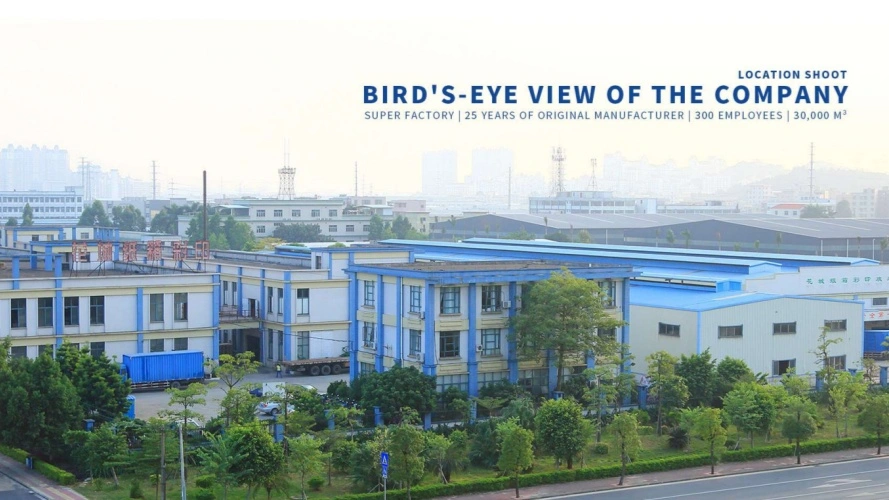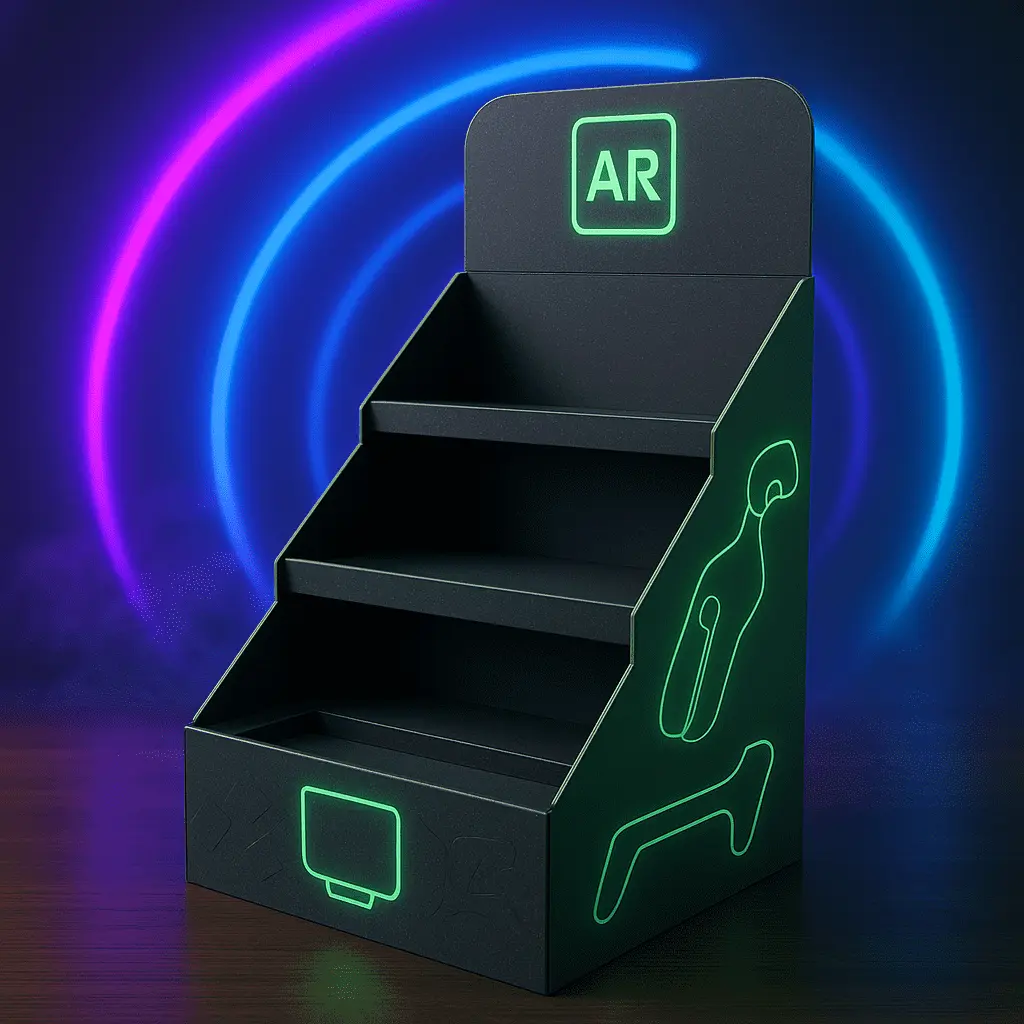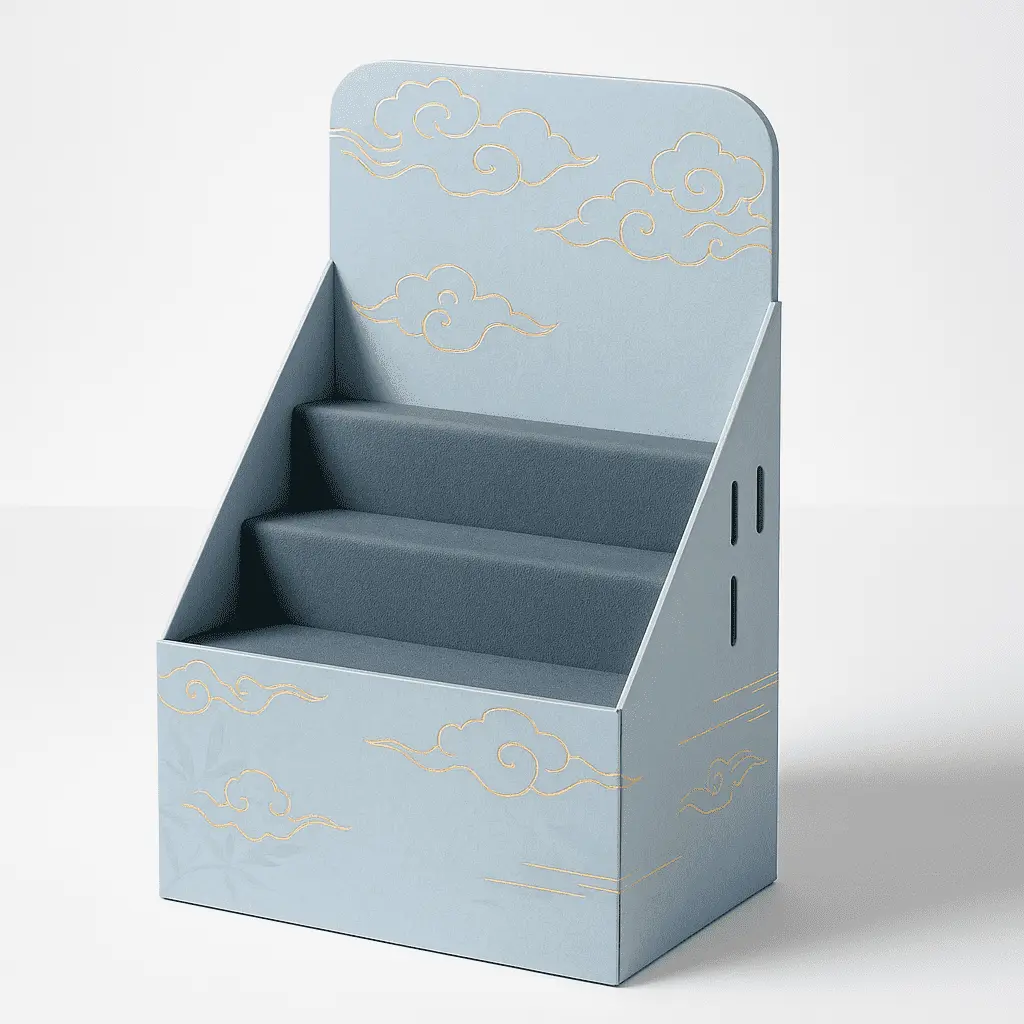What Makes PDQ Display Ideal for Promotional Campaigns?
PDQ displays, short for "Pretty Darn Quick" displays, have become an indispensable tool for promotional campaigns across various industries. These versatile point-of-purchase solutions offer a unique combination of visibility, convenience, and cost-effectiveness that makes them ideal for showcasing products and capturing consumer attention. PDQ displays excel in their ability to be quickly assembled and easily placed in high-traffic areas, maximizing product exposure and driving impulse purchases. Their customizable nature allows brands to create eye-catching designs that align perfectly with their marketing strategies, while their compact footprint ensures efficient use of retail space. By providing a seamless shopping experience and enhancing product presentation, PDQ displays have proven to be a powerful asset in boosting sales and brand awareness during promotional campaigns.
The Versatility and Effectiveness of PDQ Displays in Marketing
Enhancing Brand Visibility and Product Presentation
PDQ displays serve as powerful marketing tools, significantly enhancing brand visibility and product presentation in retail environments. These displays are designed to catch the eye of potential customers, utilizing vibrant graphics, bold colors, and strategic placement to draw attention to featured products. The customizable nature of PDQ displays allows brands to create unique, eye-catching designs that perfectly align with their marketing aesthetics and campaign objectives.
One of the key advantages of PDQ displays is their ability to showcase products in an organized and appealing manner. By presenting items in a visually pleasing arrangement, these displays make it easier for customers to browse and select products, ultimately encouraging purchases. The strategic design of PDQ displays often incorporates tiered shelving or compartments, allowing for optimal product visibility and easy access, which can be particularly beneficial for promotional items or new product launches.
Moreover, PDQ displays offer the flexibility to highlight specific product features or promotional offers. Brands can incorporate informational elements, such as product descriptions, pricing details, or special discounts, directly onto the display. This integration of marketing messages with product presentation creates a cohesive and compelling shopping experience, effectively communicating the value proposition to potential customers at the point of purchase.
Maximizing Retail Space Efficiency
In the competitive retail landscape, efficient use of space is crucial for both retailers and brands. PDQ displays excel in this aspect by offering a compact yet impactful solution for product showcasing. These displays are designed to maximize vertical space, allowing for the presentation of multiple products within a relatively small footprint. This space-efficient design is particularly valuable in high-traffic areas or smaller retail environments where floor space is at a premium.
The modular nature of many PDQ displays adds another layer of space optimization. Retailers can easily adjust the configuration of these displays to fit different spaces or accommodate varying product quantities. This flexibility ensures that PDQ displays can be effectively utilized across diverse retail settings, from large department stores to small convenience shops.
Furthermore, the portable nature of PDQ displays allows for easy relocation within a store. This mobility enables retailers to strategically place these displays in high-traffic areas or near complementary products, maximizing visibility and potentially increasing cross-selling opportunities. The ability to quickly move and reposition PDQ displays also facilitates easy store layout changes, allowing retailers to refresh their space and keep the shopping experience dynamic for customers.
Driving Impulse Purchases and Boosting Sales
One of the most significant benefits of PDQ displays in promotional campaigns is their ability to drive impulse purchases. By placing products in easily accessible, strategically located displays, brands can capture the attention of shoppers who may not have originally intended to purchase those items. The convenience and visibility offered by PDQ displays can often tip the scales in favor of a spontaneous purchase decision.
The design of PDQ displays typically incorporates elements that create a sense of urgency or exclusivity. Limited-time offers, special promotions, or the perception of scarcity can be effectively communicated through the display's graphics and messaging. This strategic approach taps into consumers' fear of missing out (FOMO) and can significantly boost sales during promotional periods.
Additionally, PDQ displays facilitate easy product sampling or demonstrations, which can be particularly effective for new product launches or promotional campaigns. By allowing customers to interact with products directly at the point of purchase, these displays can increase engagement and confidence in the product, leading to higher conversion rates. The immediate availability of products showcased in PDQ displays also reduces barriers to purchase, making it more likely for interested customers to follow through with a transaction.
Design and Customization Options for PDQ Displays
Materials and Structural Considerations
The choice of materials for PDQ displays plays a crucial role in their effectiveness and durability. Commonly used materials include corrugated cardboard, plastic, and various types of wood or engineered wood products. Each material offers unique benefits and considerations. Corrugated cardboard, for instance, is lightweight, cost-effective, and easily recyclable, making it an excellent choice for short-term promotions or eco-conscious brands. Plastic displays, on the other hand, offer greater durability and water resistance, suitable for longer-term use or displays that may be exposed to moisture.
Structural design is another critical aspect of PDQ displays. The display's structure must be robust enough to support the weight of the products while maintaining an attractive appearance. Innovative structural designs can incorporate features like adjustable shelves, interchangeable header cards, or modular components that allow for easy reconfiguration. These design elements not only enhance the display's functionality but also extend its lifespan by enabling adaptation to different product lines or promotional campaigns.
Advanced manufacturing techniques, such as die-cutting and digital printing, allow for intricate designs and high-quality graphics to be incorporated into the structure of PDQ displays. These techniques enable the creation of unique shapes, cut-outs, and three-dimensional elements that can significantly enhance the visual appeal and effectiveness of the display. The structural design should also consider factors like ease of assembly, shipping efficiency, and in-store setup to ensure practical implementation of the display in various retail environments.
Graphic Design and Branding Elements
The visual appeal of PDQ displays is paramount in capturing consumer attention and effectively communicating brand messages. Graphic design plays a pivotal role in this aspect, encompassing everything from color schemes and typography to imagery and logo placement. Effective graphic design for PDQ displays strikes a balance between eye-catching visuals and clear, concise messaging that resonates with the target audience.
Color psychology is often employed in the design of PDQ displays to evoke specific emotions or associations. For example, vibrant colors might be used to create a sense of excitement for a new product launch, while more subdued tones could be appropriate for premium or sophisticated offerings. The strategic use of contrasting colors can help key information stand out, guiding the customer's eye to important details like pricing or product features.
Typography is another crucial element in PDQ display design. The choice of fonts, text size, and placement can significantly impact readability and message retention. Headers and key selling points should be easily readable from a distance, while more detailed information can be presented in smaller text for closer inspection. The integration of brand logos and consistent use of brand colors and styles help reinforce brand identity and create a cohesive look that aligns with broader marketing efforts.
Interactive and Technological Integrations
As technology continues to evolve, PDQ displays are increasingly incorporating interactive and technological elements to enhance customer engagement and provide more immersive experiences. These innovations range from simple QR codes that link to product information or promotional websites, to more advanced features like built-in touchscreens or augmented reality (AR) capabilities.
Interactive touchscreens integrated into PDQ displays can offer customers detailed product information, comparison tools, or even the ability to place orders directly from the display. This level of interactivity not only enhances the shopping experience but also provides valuable data on customer preferences and behaviors. Similarly, AR technology can allow customers to virtually try products or visualize them in different settings, adding an experiential dimension to the promotional campaign.
Some PDQ displays are now incorporating digital signage elements, such as small LCD screens or LED lighting. These can be used to display dynamic content, such as changing promotions, product videos, or real-time inventory information. The ability to update content remotely adds flexibility to promotional campaigns and ensures that messaging remains current and relevant. Additionally, sensor technologies can be integrated to trigger content based on customer proximity or interaction, creating more personalized and engaging experiences.
Implementation Strategies for Successful PDQ Display Campaigns
Strategic Placement and In-Store Positioning
The effectiveness of PDQ displays in promotional campaigns heavily relies on their strategic placement within retail environments. Optimal positioning ensures maximum visibility and engagement with the target audience. High-traffic areas, such as near entrances, checkout counters, or main aisles, are prime locations for PDQ displays. These spots capitalize on customer flow and increase the likelihood of impulse purchases.
Cross-merchandising is another powerful strategy in PDQ display placement. By positioning displays near complementary products, retailers can encourage additional purchases and increase average transaction values. For instance, a PDQ display featuring snack items might be placed near the beverage section, or a display of mobile phone accessories could be situated close to the electronics department.
Consideration should also be given to the visual landscape of the store. PDQ displays should be positioned in a way that doesn't obstruct important sightlines or create congestion in high-traffic areas. The placement should enhance the overall shopping experience rather than detract from it. Additionally, rotating the position of PDQ displays periodically can help maintain customer interest and expose products to different segments of shoppers.
Timing and Seasonal Considerations
The timing of PDQ display campaigns plays a crucial role in their success. Aligning these promotions with seasonal events, holidays, or specific shopping periods can significantly boost their effectiveness. For example, back-to-school seasons, major sporting events, or holiday shopping periods present opportunities to tailor PDQ displays to specific consumer needs and mindsets.
Seasonal considerations also extend to the design and content of PDQ displays. The visual elements, product selection, and messaging should reflect the current season or upcoming events. This alignment not only makes the displays more relevant and appealing but also taps into the seasonal shopping behaviors of consumers.
Furthermore, the duration of PDQ display campaigns should be carefully planned. While some displays might be suitable for long-term use, others might be designed for short-term, high-impact promotions. Understanding the lifecycle of products and the dynamics of promotional periods helps in determining the optimal duration for each PDQ display campaign, ensuring that the displays remain fresh and effective throughout their deployment.
Monitoring and Analyzing Campaign Performance
To maximize the effectiveness of PDQ display campaigns, it's essential to implement robust monitoring and analysis strategies. This involves tracking key performance indicators (KPIs) such as sales lift, conversion rates, and customer engagement levels. Advanced retail analytics tools can provide valuable insights into how PDQ displays are impacting overall store performance and individual product sales.
A/B testing can be a powerful method for optimizing PDQ display effectiveness. By comparing different designs, placements, or product mixes, retailers and brands can identify the most successful configurations. This data-driven approach allows for continuous improvement and refinement of PDQ display strategies.
Customer feedback and in-store observations are also valuable sources of information. Staff feedback on customer interactions with PDQ displays, as well as direct customer comments, can provide qualitative insights that complement quantitative data. This holistic approach to performance analysis ensures that PDQ display campaigns are not only driving sales but also enhancing the overall customer experience and brand perception.
Conclusion
PDQ displays have emerged as a versatile and powerful tool in promotional campaigns, offering a unique blend of visibility, convenience, and cost-effectiveness. Their ability to enhance brand presence, maximize retail space efficiency, and drive impulse purchases makes them an invaluable asset for marketers and retailers alike. By leveraging strategic design, customization options, and thoughtful implementation strategies, brands can create compelling PDQ display campaigns that resonate with consumers and deliver tangible results. As retail environments continue to evolve, the adaptability and effectiveness of PDQ displays position them as a enduring solution for promotional success in the dynamic world of retail marketing.
Contact Us
Ready to elevate your promotional campaigns with custom PDQ displays? At Guangzhou Huadu Fetching Color Printing and Packaging Co., Ltd., we specialize in creating innovative, eye-catching displays tailored to your brand's unique needs. Let our expert team help you design and produce PDQ displays that will make your products stand out and drive sales. Contact us today at support@fetchingprinting.com to discuss your project and take the first step towards a successful promotional campaign.
References
1. Smith, J. (2022). "The Impact of Point-of-Purchase Displays on Consumer Behavior." Journal of Retail Marketing, 45(3), 178-195.
2. Brown, A. & Johnson, L. (2021). "Maximizing Retail Space: Strategies for Effective Product Presentation." Retail Management Quarterly, 33(2), 67-82.
3. Garcia, M. (2023). "Innovations in POP Display Design: Incorporating Technology for Enhanced Customer Engagement." International Journal of Retail & Distribution Management, 51(4), 312-328.
4. Thompson, R. (2022). "Seasonal Marketing Strategies: Optimizing Promotional Campaigns Throughout the Year." Marketing Science Review, 18(1), 45-60.
5. Lee, S. & Park, H. (2021). "The Role of Visual Merchandising in Driving Impulse Purchases: A Study on PDQ Displays." Journal of Consumer Psychology, 29(3), 201-217.
6. Wilson, K. (2023). "Measuring ROI in Retail Promotions: Advanced Analytics for PDQ Display Campaigns." Retail Analytics Quarterly, 12(2), 89-104.




